In my last Costa Rica fishing report I talked about catching a giant hawkfish while fishing from the rocks. I find it interesting they call this fish a giant hawkfish because their maximum size is only 24 inches. Nevertheless it was a cool catch and is one of the prettiest fish I've ever hooked.
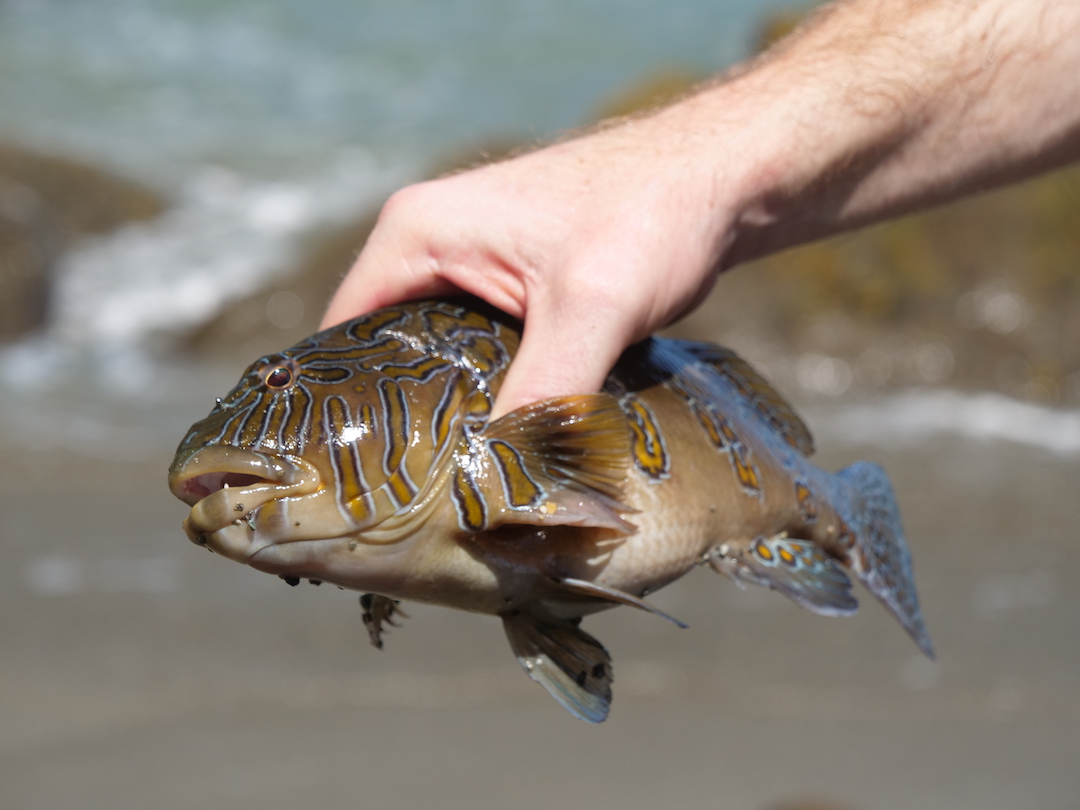
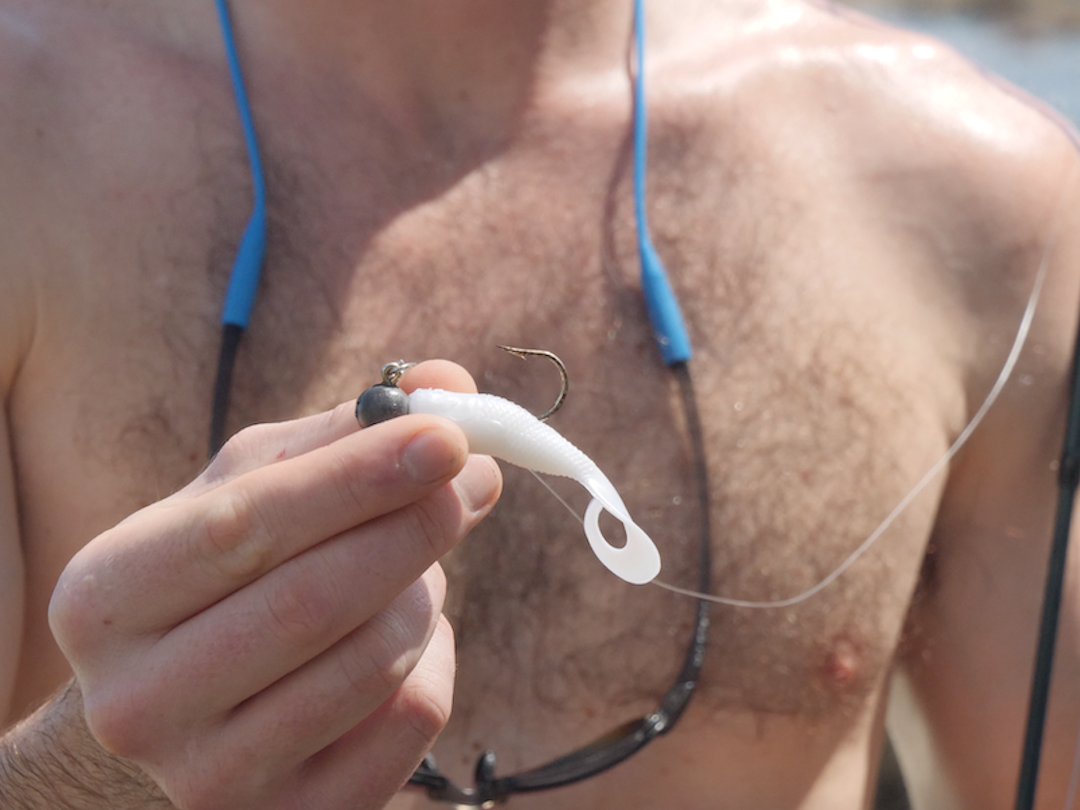
The giant hawkfish was fooled by a 4 inch white Gulp curly tail grub on a 1/2oz leadhead. The Gulp curly tail is a scented soft plastic lure that imitates minnows, shrimp, and various other small bait fishes. So far it's worked well on not just the hawkfish, but also on yellow corvina, and other various fish that like to hang around the rocks.
So far this trip I have enjoyed using my smaller travel rod setup and I've been having fun targeting these smaller, yet delicious fishes. It seems that if I cast the Gulp around the rocks, then I am pretty much guaranteed to at least get a bite from something, which has been fun.
Safety on the Rocks
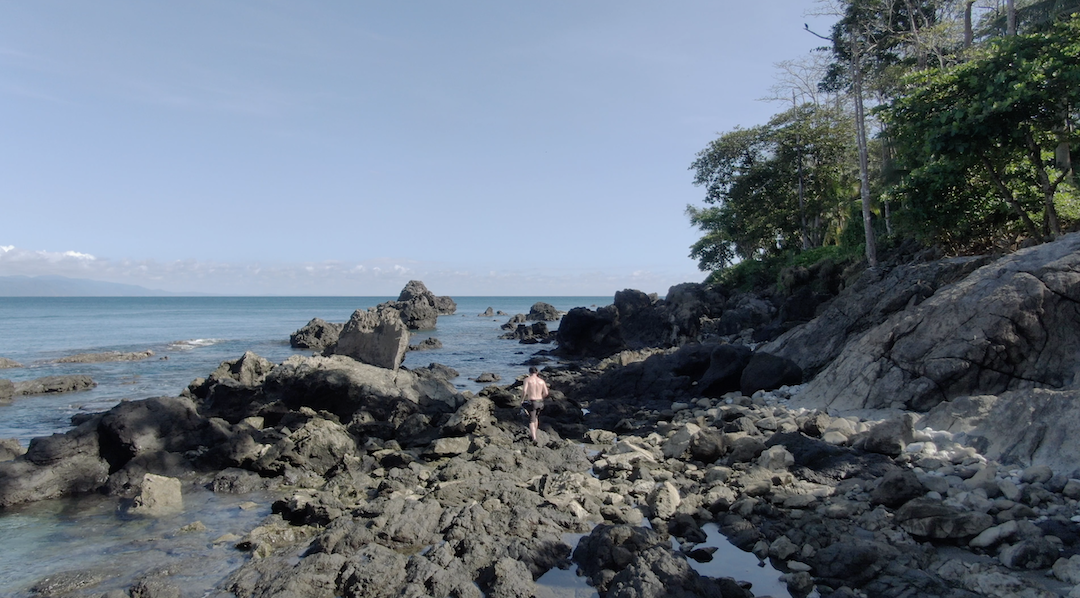
Last week I decided to once again head down to the rocky shoreline and try my luck fishing the rocks directly in front of where we are staying in Costa Rica. It was the middle of the afternoon and the sun was shining bright. The tide was incoming but still low enough to allow me to access some very fishy looking water.
The rocks can be extremely slippery and many of the rocks have very sharp edges. I have fallen on these rocks before and it is no joke how easily you can get cut up. This year to help me get a better footing on the rocks I installed 15 boot studds to each of my heavy duty sandals.

If you aren't familiar with Frogg Togg boot studds then I will tell you right now that they are one of the cheapest and best fishing investments I have ever made. The Frogg Togg studs easily screw into the bottom of any sandal, shoe or boot, providing terrific traction on rocks and other slippery terrain, such as at the Cape Cod Canal.
I could feel the Frogg Toggs doing their job as I clambered over the ancient lava field in an effort to access deep water. Eventually I spotted a rock that provided me with decent casting access to a pool where I thought more giant hawkfish or black jacks might be hiding. I hopped up onto the rock and began casting around.
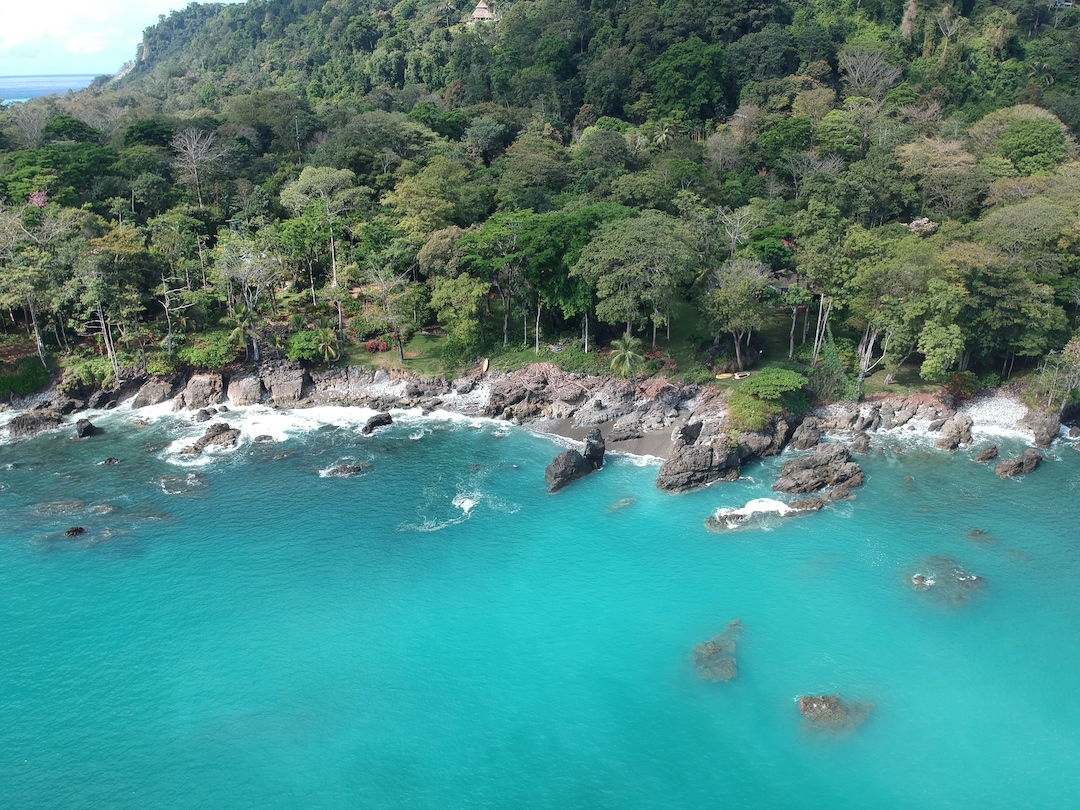
The Biggest Surprise of the Trip (So Far)
The pool directly in front of the rock looked fishy enough, but to my surprise I did not get any bites on my first, second, or third cast. That's when I decided to make a slightly longer cast out beyond the pool into deeper water. Little did I know what was about to happen next!
I was still using the 4 inch white Gulp curly tail but I had switched to a lighter lead head that is probably only 1/3 to 1/4 ounces. The lead head is white with a red eye and it has a very sharp, but very lightweight hook. I've used this lead head for catching schoolie stripers back on Cape Cod, but I would never intentionally use such a lightweight lead head when targeting big fish.
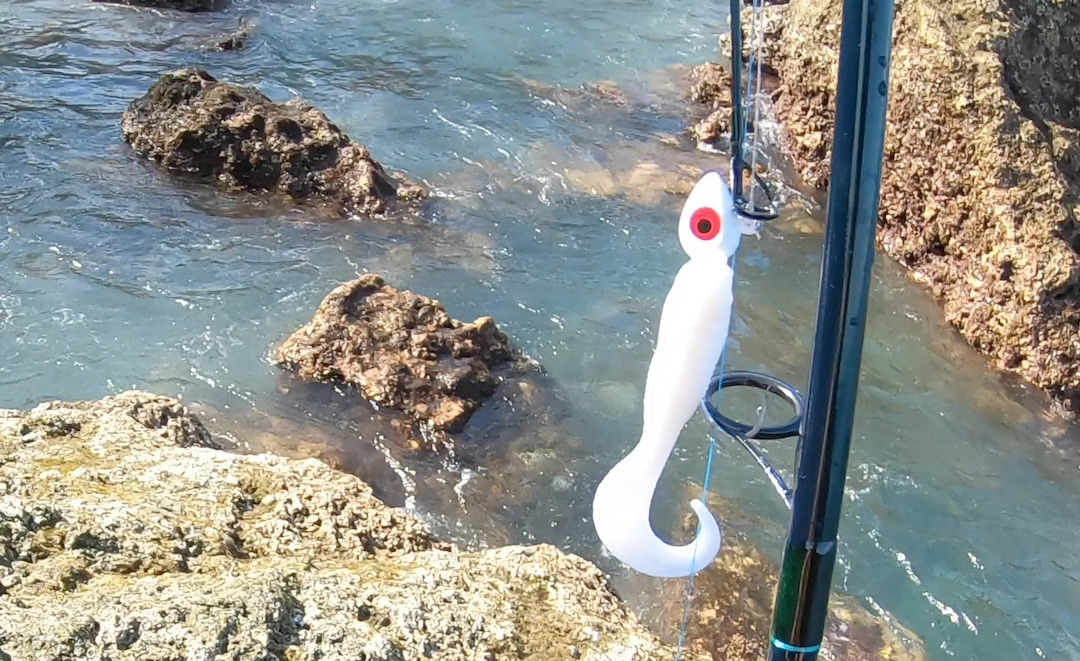
However, sometimes big fish bite when you least expect it! My cast out into the deeper water landed with a splash and the lead head began to sink towards the bottom. As the lure was sinking I felt a sudden and solid take. My rod instantly doubled over and I was tight to a powerful fish.
There was no need to set the hook as the fish was already screaming line from my VR50 spinning reel. Whatever this fish was, it was strong! Line kept being pulled from my reel and the mystery fish surfaced yards offshore. The fish had a forked tail similar to that of a tuna. It was darting back and forth and thrashing on the surface, pulling line the entire time.

Big Fish on Light Tackle
I had my drag set tight enough to maintain good pressure, but I couldn't tighten the drag too much because of the lightweight hook on my lead head. If I was to apply too much pressure, then the hook would certainly straighten out and I would lose the fish. Instantly I recognized the fact that I was in for a battle and that this fight could very well extend for 30 minutes or more.
I have found myself in similar situations before while fishing in Costa Rica. Back at one of our favorite places to visit in Costa Rica I will often use a lightweight setup with small epoxy jigs to target Sierra Mackerel. One time a few years ago while targeting mackerel I accidentally hooked into a 20 pound jack crevalle which nearly spooled me. 30 minutes later, with some very sore biceps, I was finally able to land the jack.
The moral of my story is that I never intentionally enjoy hooking powerful fish on tackle that is not meant for them. It always results in an agonizingly long fight. Nevertheless I am sure many of you reading this right now can relate. If not, then just keep fishing and eventually you'll accidentally hook a huge fish on tackle that is not meant for it.
I decided my only option was to hold on and hope that the fish would quickly tire. Unfortunately this is not what happened. Whatever species of fish I had hooked had incredible stamina. To make matters even more interesting, the fish was now moving down the coastline and I realized I did not stand a chance of landing this fish while standing on my current rock. I faced the reality that I needed to make a move and somehow reach another rock that was situated further offshore.
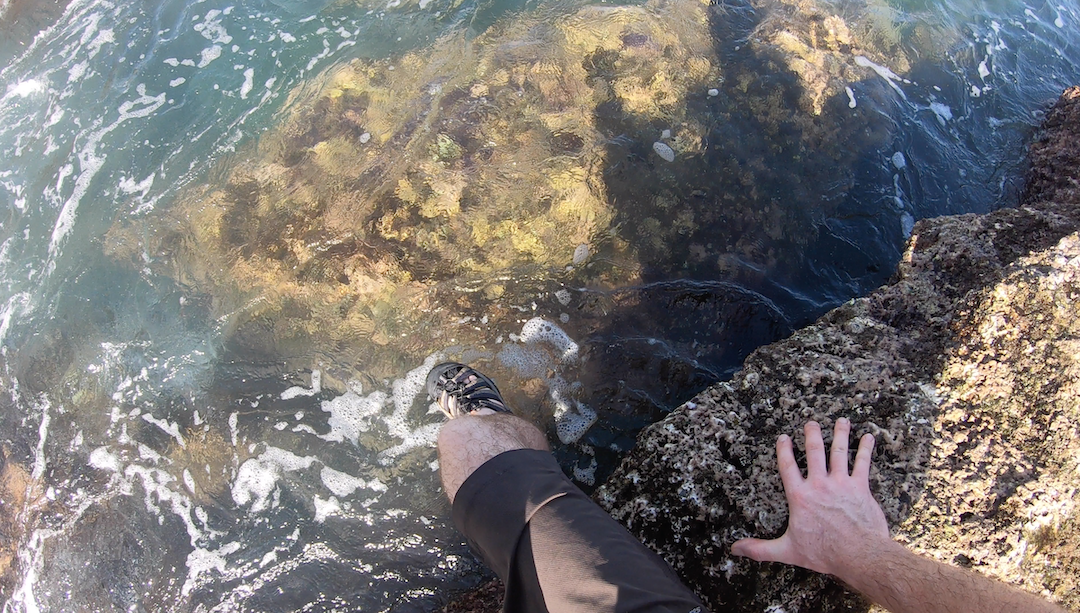
Moving to an Offshore Rock
There was a swell rolling in from the Pacific Ocean that would occasionally break over the lava crusted rocks that I was standing on. The tide was coming in which meant I would need to be extra cautious about accessing another rock further offshore. I have been knocked off rocks before by waves and it is no fun, and is arguably the most dangerous situation a surfcaster can find him and or herself in.
Finally I picked a rock that from my current vantage point seemed suitable for fighting, and hopefully eventually landing, this powerful mystery fish. I figured I would use a smaller rock as a stepping stone for accessing the bigger rock offshore, but when I stepped my foot found nothing but water. I was plunged into the sea and went completely underwater.
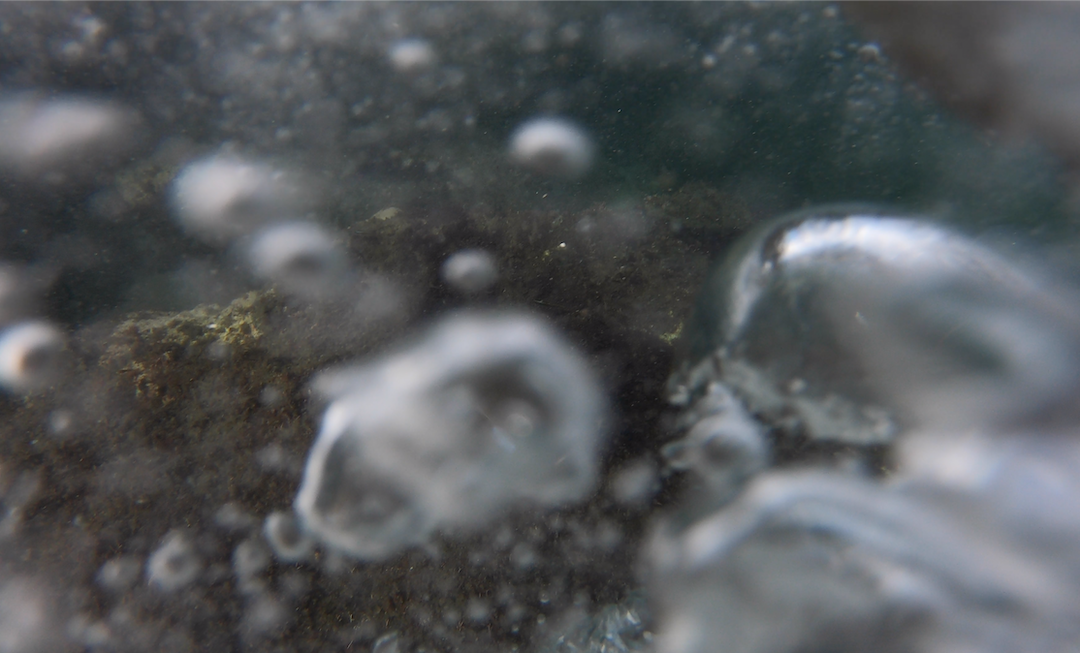
Upon surfacing I found that by some miracle I was still tight to the fish. I did my best to keep the braided line off the razor sharp rocks, while simultaneously using my other hand to grab a hold and hoist myself out of the water. Somehow it all worked and within a few moments I was standing on the rock where I hoped to eventually land this surprise monster.
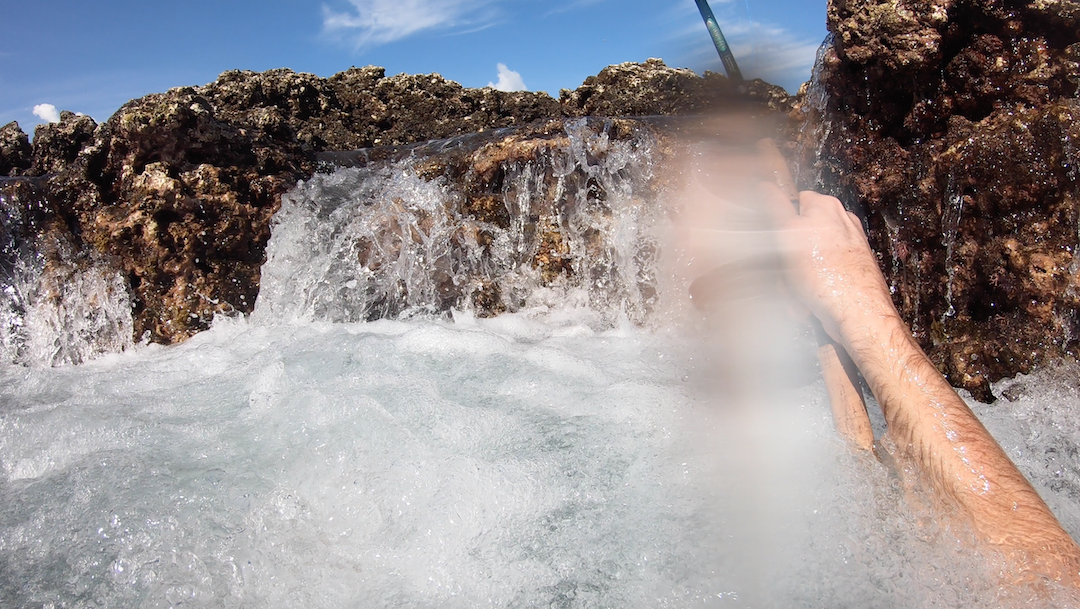
When I stood up I could not believe what I was seeing. Behind my hooked fish were several other fish of the same species, except these specimens were even bigger than the fish I had on the end of my line. There were four or five of them, and they would end up hanging around for the duration of the fight.
I was now about 15 minutes into what was turning into a very memorable fishing experience.
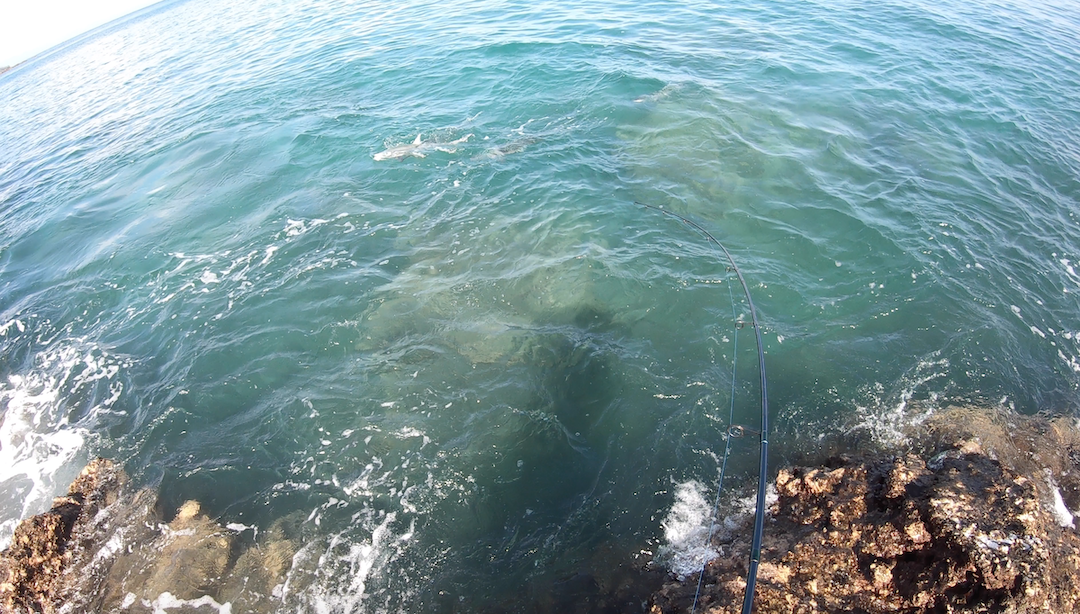
The next chunk of time was spent slowly and ever so carefully maneuvering the mystery fish closer to the coast. I had to be careful to keep the braided line off the sharp rocks, while also keeping an eye on the waves that were breaking over the rocky reef.
Finally, after the most fun battle I've had in a while, I had the fish in the wash right in front of me.


Jeez Ryan, great story with the milk fish, looking forward to read up on the rest of your Costa Rican adventure. Thanks🤙🎣
My pleasure Charles. I appreciate you reading and commenting. 🙌🏻
Apparently having a Van Staal does pay off … can’t believe you stepped off into the abyss AND managed y hold onto the rod AND not break the line … you passed the MYCC SEAL Test
LOL, the Van Staal is a must-have for Costa Rica! I can’t imagine fishing down there without a sealed reel. I definitely got very lucky with this milkfish!
thanks for your insight, i am planing my first trip down there and taking note of all your tips.
Sounds good David. Do you think you’ll visit the Osa or head to some other region in Costa Rica?
Great story! An experience for sure,
Thanks for reading. I will remember this fish for a long time. Lots of fun!
Ryan, What a great fishing adventure. I missed last season due to back surgery and recovery. Reading your milkfish saga has me pumped for the season to come. Thanks, Ryan!
I’m glad you are excited for the 2022 season. It will be go-time before we know it! I’m sorry to hear about your back surgery and missing out on last year, but I have a feeling you’ll make up for it this season. I hope the back is feeling better by the day.
Ryan, Milkfish… can you eat that or drink it? Great story!
So based off my limited research, I have found sources that say the fish is called a milkfish because it’s flesh is milky white. Supposedly it is very good to eat and is extremely popular in certain areas.
Ryan,
Your adventure looks amazing. I have heard those Milkfish give a great fight. Thanks for sharing your trip with us. Helps make this cold winter a little sunnier.
Thanks Pierre, it is definitely cold out today! I am back home and I think it’s about 4 degrees outside. Anyways the milkfish do fight extremely hard and they are super fun to catch. Thanks for the comment!
Ryan – Great story about catching that beautiful Milkfish! Did you find out if they are good to eat? Perhaps you will catch another one when you go to Costa Rica again. Thanks, Gretchen
Hey Gretchen, based off my research online I’ve found out that they are very good to eat! Supposedly their fillets are white and flakey. I guess I will just have to go back to Costa Rica and try to catch another one. 😎
Wow quite the fish story Ryan. Really expected that you would lose it navigating around the sharp rocks with such light tackle. The milkfish was beautiful, made me happy you decided to release. Hope you get a chance to hook another in the future.
I definitely got lucky Joel. No doubt about that! They are a very beautiful fish. I actually got some drone footage of milkfish that I will share soon. Thanks for the comment!
Fantastic account of your milkfish adventure, Ryan! How you were able to land it on the light gear, sharp reef rocks, and going for a swim is pretty amazing. Your decision to release it not knowing whether it was edible was the right one that shows great appreciation for this fish. I’m wondering if ciquatera (spelling?) is a problem when trying to eat fish where you were. That could have nasty consequences. Thanks for the blog.
Thanks for the comment Ron. Always good to hear from you! I was shocked at how strong and powerful those milkfish are, especially considering they mostly eat algae and small invertebrates. With regards to ciguatera, I have never heard anyone here in SW Costa Rica ever mention it. I also did some research online and did not find any literature about ciguatera cases in Costa Rica. I agree that ciguatera can be very nasty! Fortunately it seems like Costa Rica isn’t a hot spot for it.
Hey Ron, congratulations! You won the giveaway for the MFCC hat and $25 gift certificate!
I just finished watching the video of this story. And all I have to say is wow. My fiancée would have some things to say if I started jumping off perfectly nice rocks with my rod and reel in hand into unknown waters to land a fish. Very cool to watch and entertaining.
LOL, yes I hope my mom doesn’t watch that video, or else I”ll be getting a nervous phone call tonight. 😂
Hey Ryan the account of your epic (and somewhat life threatening) battle with the milkfish reminds me of some classic fishing tales I used to read in my father’s Field & Stream magazines when I was a kid.
It’s these tales that inspire people to take up fishing and us old hands to keep going out no matter how many times we get skunked. The adventure of a lifetime could be on the next cast.
Great adventure and great writing!
You are correct Ken, in that you just never know what is going to happen when you go fishing. This is especially true in the tropics with so many different species around.
These rocks are life threatening when the surf is really high, and during the wet season I am told that the waves in this spot are often 16ft high. I can only imagine what that must look like. Fortunately during this time of the year it is very possible to safely fish this area, but only as long as you keep an eye on the waves and don’t push the limits too much.
Afterall, the locals fish these rocks in flip flops! At least I had heavy duty sandals with Frogg Toggs! Thanks for the comment and have a great weekend.
Unreal story and video might I add. That was one crazy strong fish. And wow jumping in the water like that what a rush. I’m glad you released it. Wasn’t sure how you were going to get back with the fish in one hand and rod in the other. Looked pretty dangerous! The things we do land a fish lol. Tight lines!
Getting back while holding the rod and the fish is something I didn’t think about. That’s a good point Justin! LOL. Thanks for the comment and I appreciate you reading the post. 👍
Unbelievable story Ryan! Had my heart pounding haha. Still amazes me that you were able to maneuver it through the rocks on a 20 lb leader! One to remember for sure
It was a lot of fun Nick. Probably the biggest rush of the entire trip!
Great catch and release Ryan! I was in Costa Rica last March, while on a panga I saw a huge school of them. I yelled to the captain to stop the boat!! He told me he had a fly fisherman book a charter for 6 hours the day before to specifically target them. He didn’t hook up once! After hearing that we kept on track for the original game plan. I checked on YouTube and found that fly fisherman target them around the world. Incredibly strong fish for a vegetarian. Congratulations to you and Lauren on a wonderful trip together. I loved everything about Costa Rica and will most definitely go back again.
Since posting this I have heard from several fly anglers regarding the milkfish. Apparently they are a sought after species for fly anglers around the globe. It seems like the Seychelles are a better known area for targeting milkfish on the fly, but from what we are learning, Costa Rica is also a good spot to look for them!
Great battle Ryan—and another new species on my bucket list. Hope to see you in Costa Rica next January — Tom
Sounds good Tom. I’ll keep you posted with our Costa Rica plans for next year!
Ryan, another amazing adventure catching that Milkfish and dealing with the tides and rocks at every turn but as usual you did it!
I definitely got lucky with this one Mike! I was pretty shocked that little hook held, plus with all the rocks I figured my odds of landing him were pretty low. However things worked out and I’m grateful for the experience! Out of all the fish I have caught, that milkfish is definitely one of the strongest and hardest fighting.
Ryan, you never cease to amaze me with your adventures! Glad you weren’t hurt fighting that Milkfish and getting back to shore. Have you had a chance to get out on a boat yet?